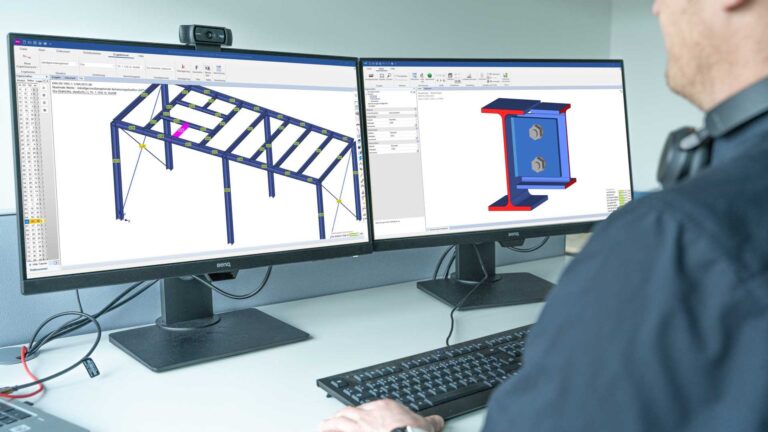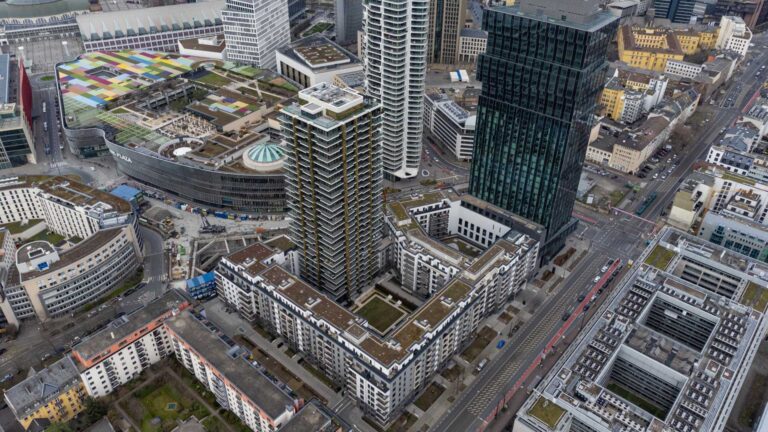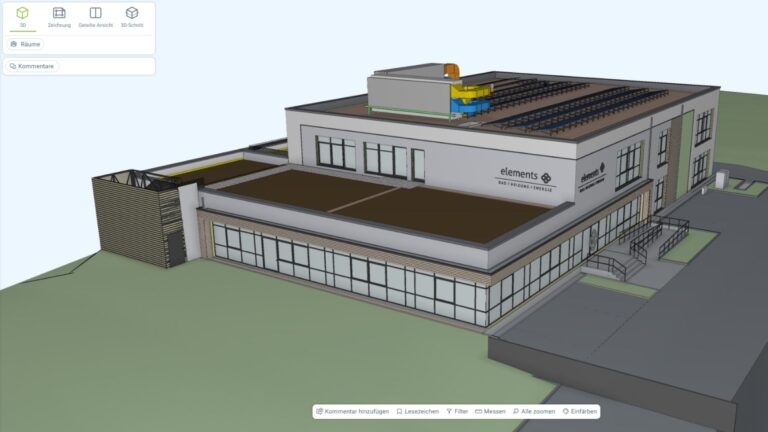Efficient design of load-bearing steel structures in second-order torsional buckling analyses
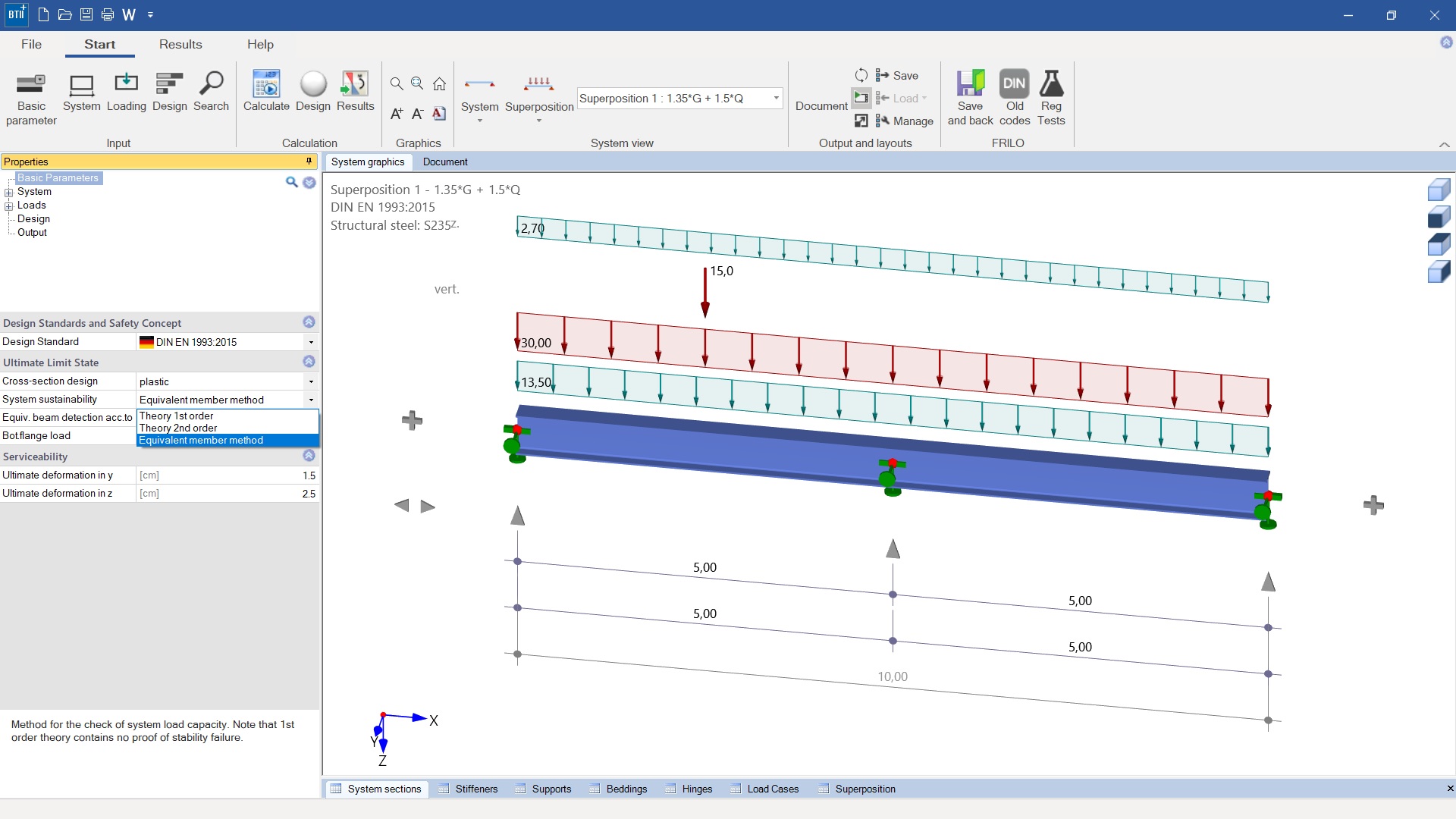
The calculation program Lateral Torsional Buckling Analysis BTII+ from the software manufacturer FRILO provides for enhanced stability verifications of steel structures in second-order torsional buckling analyses. The structural engineer can perform complex verifications that go far beyond the equivalent member method described in EC3. The classic application range of the program includes the verification of horizontal members with lateral support by purlins, bracing or trapezoidal steel sheets.
If planned torsion occurs or the sections do not have a double symmetrical cross-section, a second-order torsional buckling analysis is required for the calculation of steel structures. That is why the FRILO program Lateral Torsional Buckling Analysis BTII+ supports structural engineers in performing all the necessary structural safety verifications as well as the serviceability analysis on member systems made of steel. To do this, civil engineers can choose either the second-order torsional buckling analysis or the equivalent member method based on ideal buckling loads.
The modelling options
In the FRILO solution BTII+, the engineer can model straight bar systems with haunches and cross-sectional offsets as well as joints in combination with any type of support. The available sections include double-symmetrical rolled I-sections, double- and single-symmetrical user-defined I-sections with and without top flange angles, U-sections, hollow round sections, round and flat steels. The user can also define thin-walled open sections either by entering them directly in the BTII+ program or by importing them from the FRILO program Thin-Walled Steel Cross-Sections Q3. The structural engineer can specify user-defined supports for the member system. Both horizontal and vertical supports can be entered at different positions. In addition, supports against torsion and initial warping of the system as well as elastic translational, shear-panel and torsional restraints can be defined. These restraints can be configured as rigid supports or by specifying a spring value. The user can adjust the position of the support on the section in relation to the shear centre.
Lateral Torsional Buckling Analysis | The load entry
The loads are entered load case by load case in BTII+. The user defines the load case superpositions and selects a user-defined load application point at the cross-section. If the system is calculated in a second-order torsional buckling analysis, an initial imperfection must be defined for each load case combination. The program automatically applies a possible initial imperfection in accordance with the selected standard. The user must always check this imperfection, however.
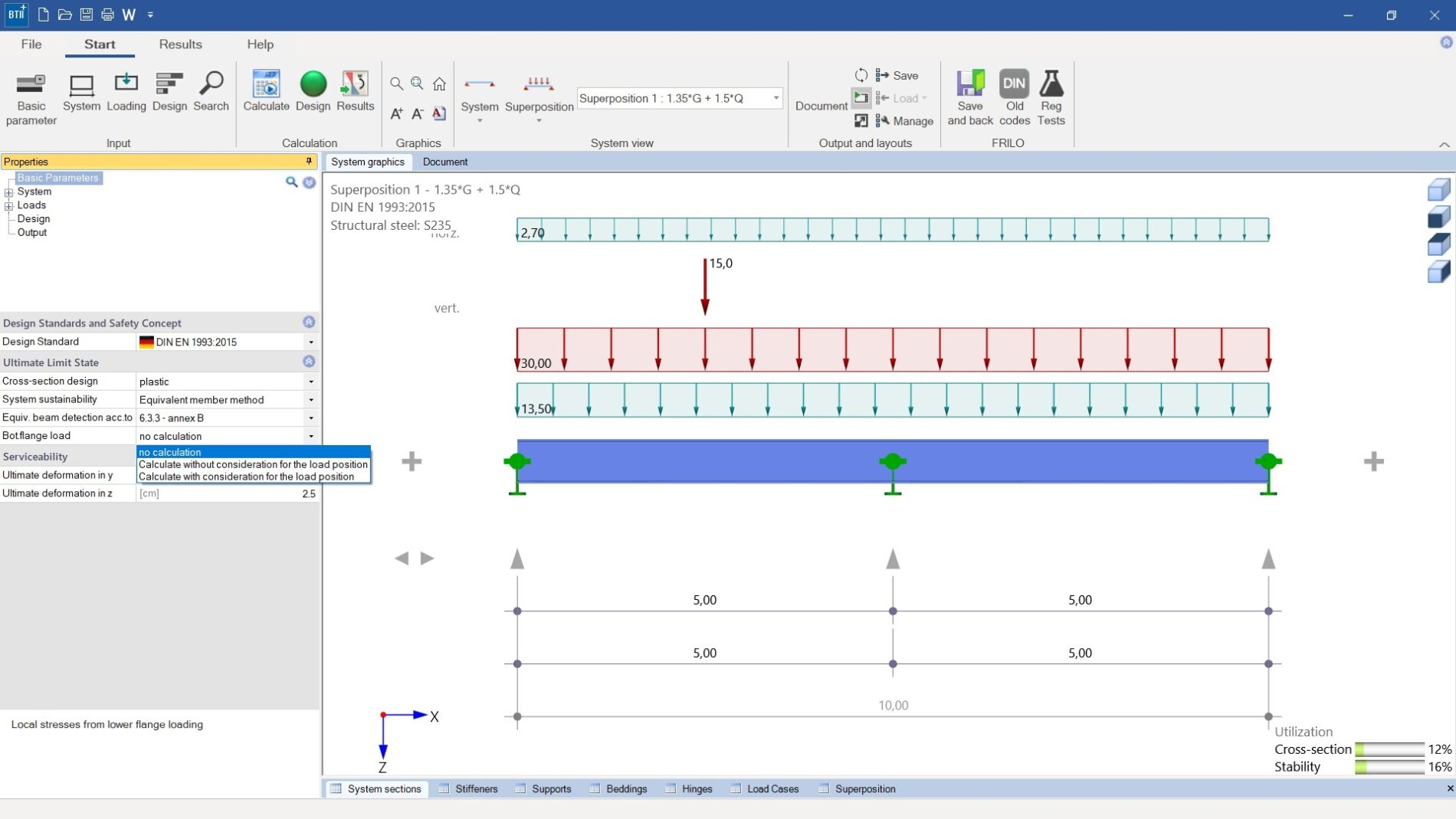
Lateral Torsional Buckling Analysis | The verification method
In BTII+, the structural engineer can choose between the “elastic” verification of the cross-section as per EN 1993-1-1, Equation (6.1) and the “plastic” verification of the cross-section as per Equation (6.2). In the elastic verification, the axial and shear stresses applying to the cross-section are determined using the design values of the internal forces calculated according to the theory of elasticity. The program then compares these stresses with the design value of the yield strength. In the plastic verification, however, the internal forces and deformations are calculated based on the theory of elasticity. The design values of the resistances result from the utilization of the plastic load-bearing capacity. The resistance to the limit internal forces is checked.
Verification of the system’s load-bearing capacity
For the verification of the system’s load-bearing capacity, BTII+ provides three different procedures. As a first option, the internal forces, deformations and stresses can be calculated in first-order analyses without a stability verification. As a second option, the equivalent member method can be used. In this case, the cross-sectional load-bearing capacity is verified with first-order internal forces in addition. As a third option, the calculation can be performed in a second-order torsional buckling analysis. In this verification, the internal forces, deformations and stresses of the deformed system are determined with consideration of warping torsion in second-order analyses. The cross-sectional resistance verification is then performed out in a stress analysis with γM,1 = 1.1. Therefore, no further stability verifications are required. For the verification of the serviceability, BTII+ determines the deformations of the system. The required load case combinations and deformation limits have to be specified by the user.
The interfaces
To transfer the system and the loads to BTII+, users can directly access the Lateral Torsional Buckling Analysis out of the following FRILO programs:

